This week, 4C explored making nature journals.
You can find lots of resource online to help you start and improve your own Nature Journaling. Here are a couple:

This week, 4C explored making nature journals.
You can find lots of resource online to help you start and improve your own Nature Journaling. Here are a couple:
This week, 4C researched some of the birds that can be found around the school grounds so that we can better understand them and find ways to help them thrive. Click on the picture to see it more closely.
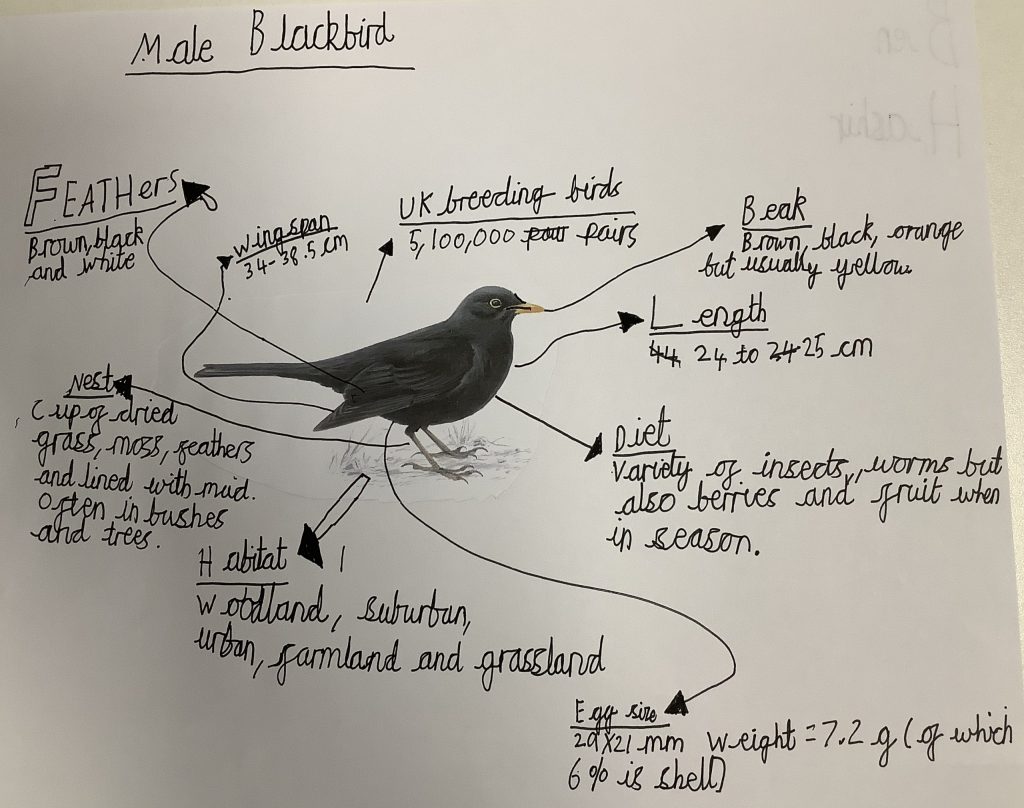
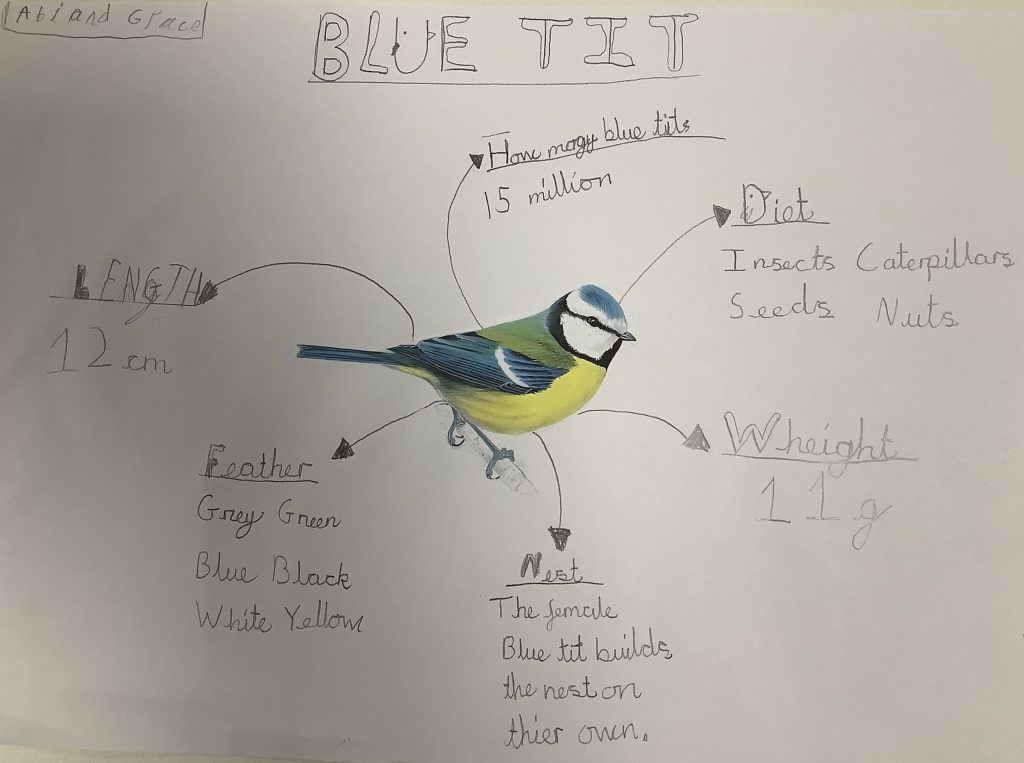
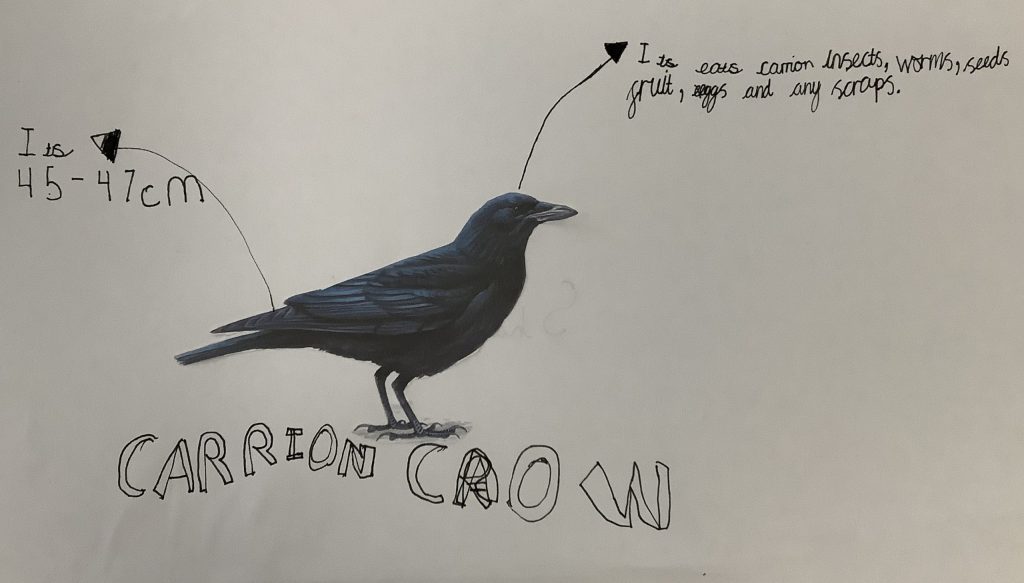
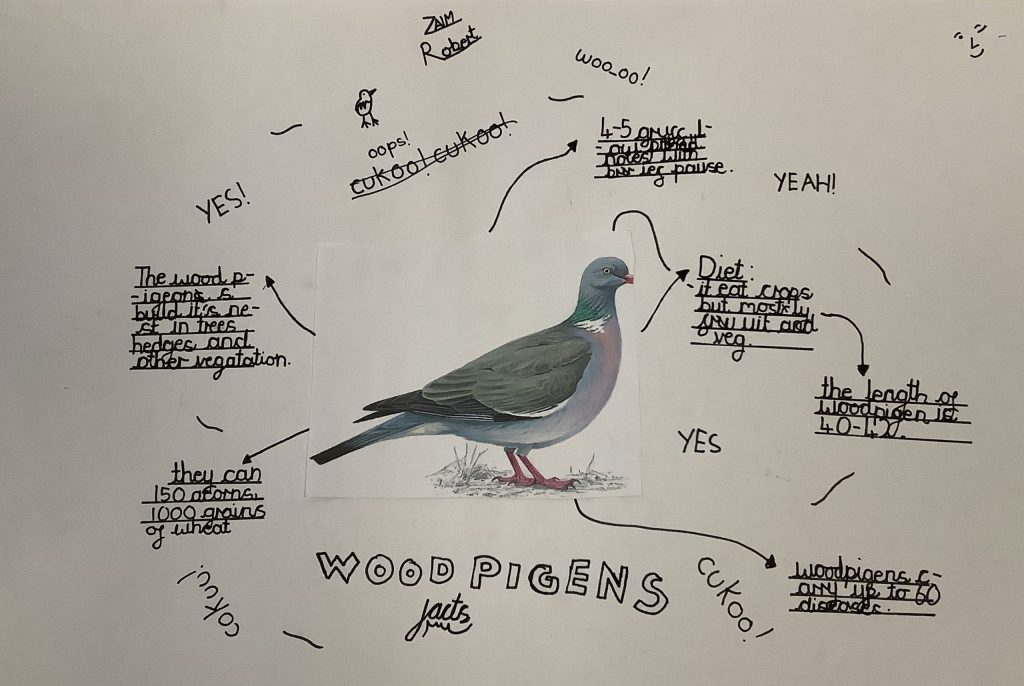
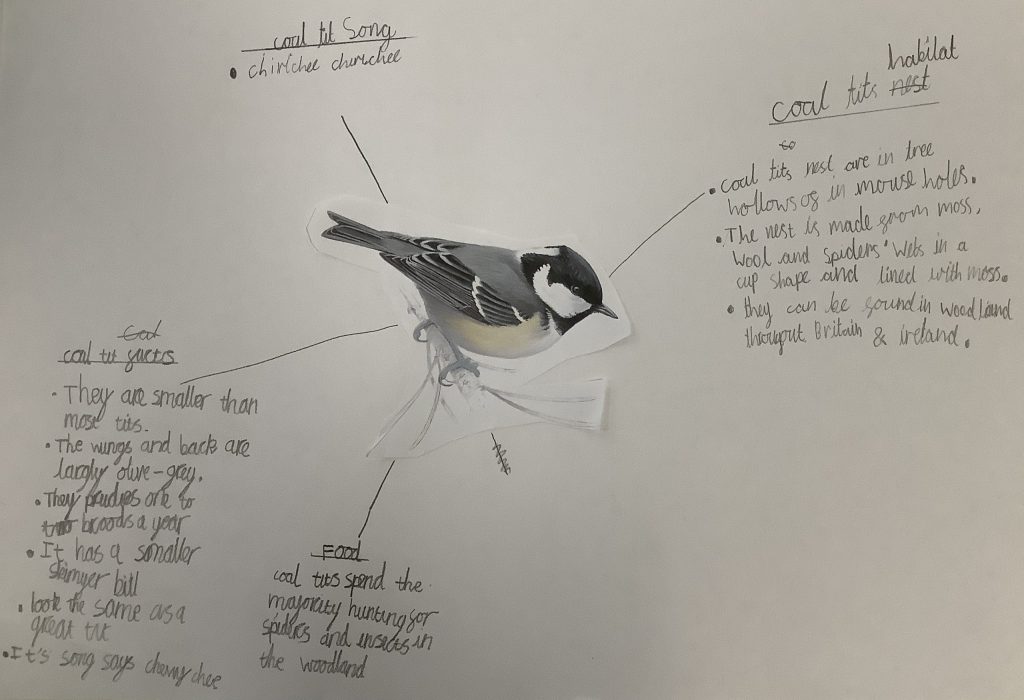

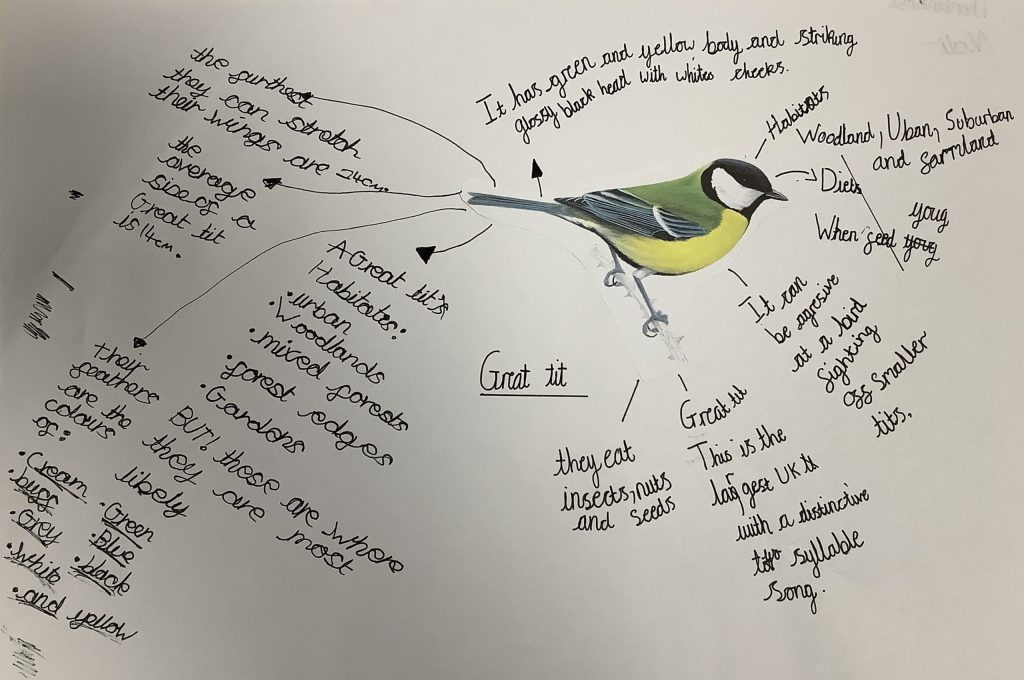
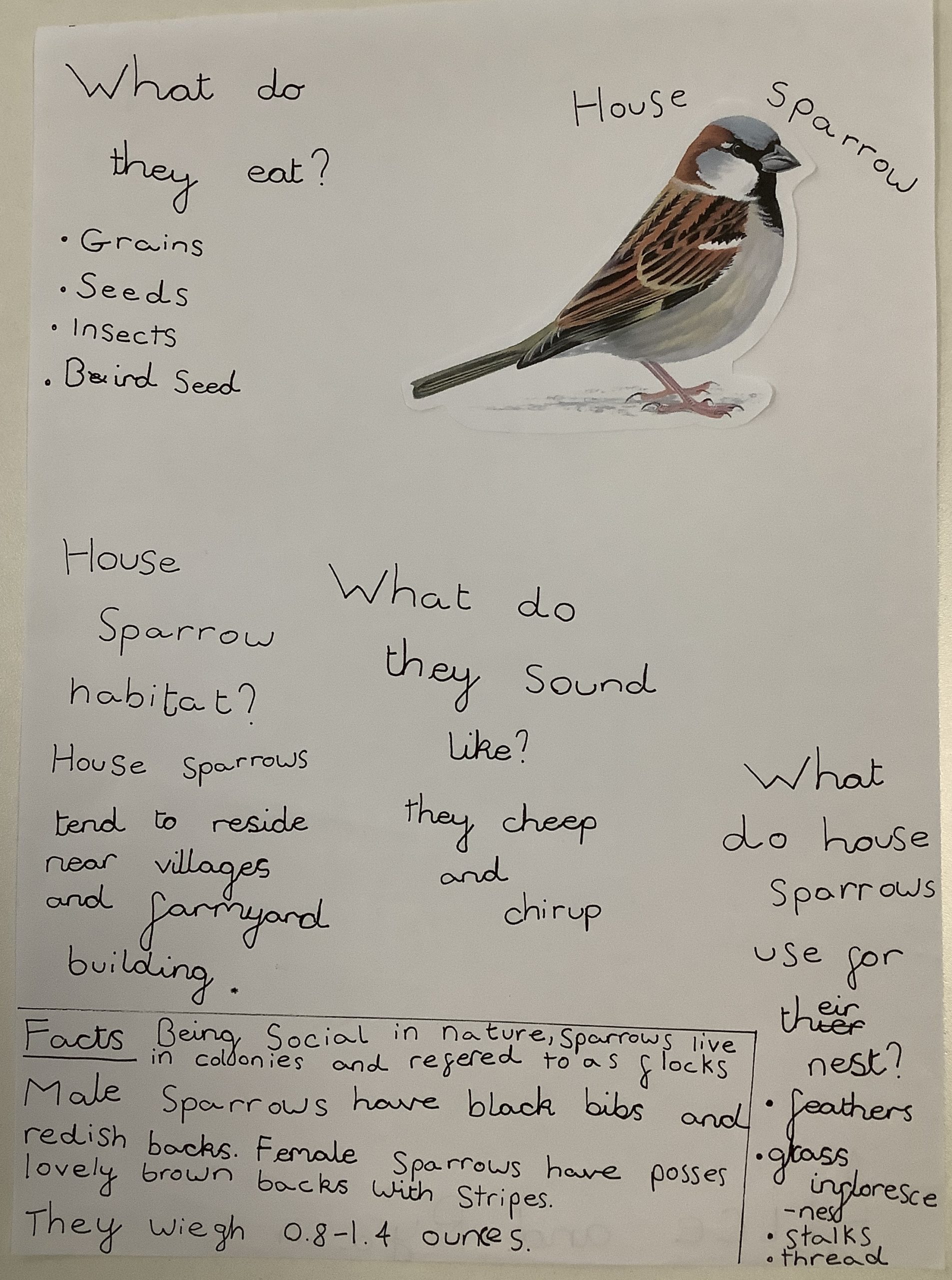
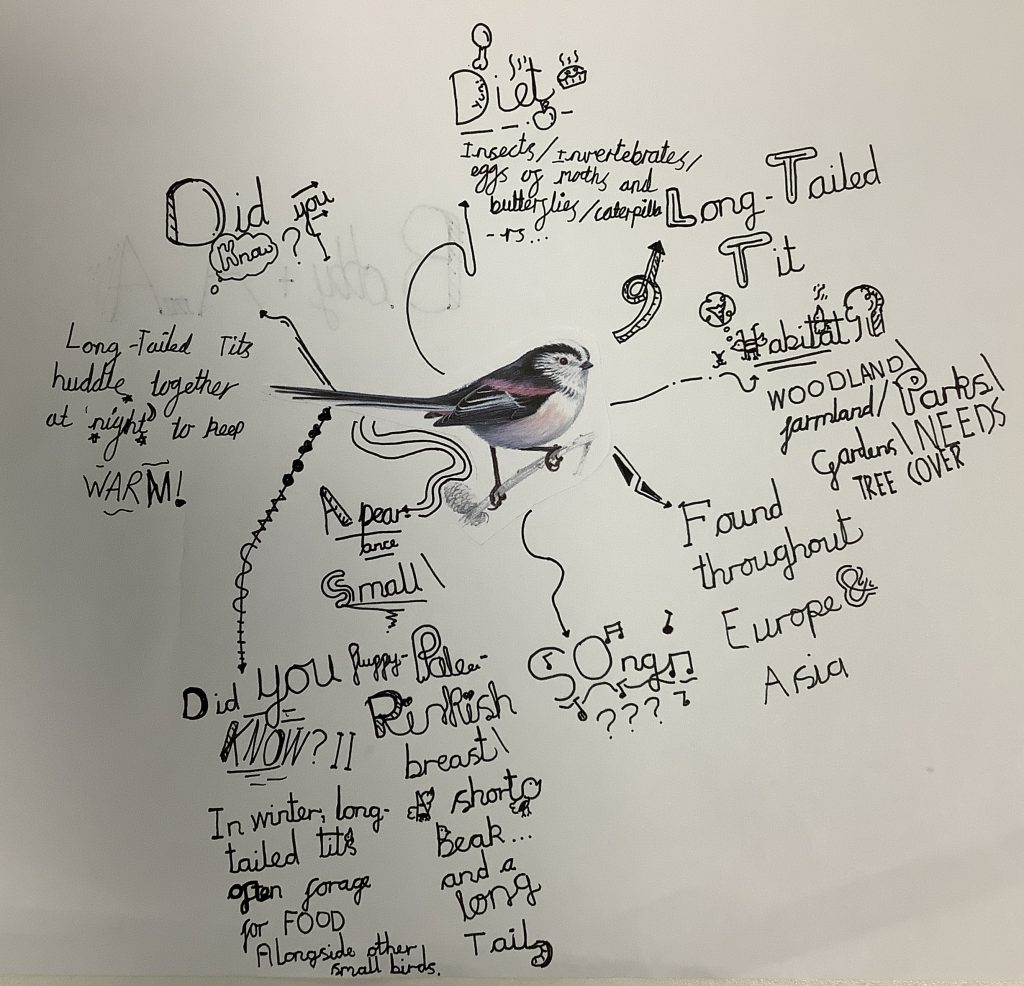
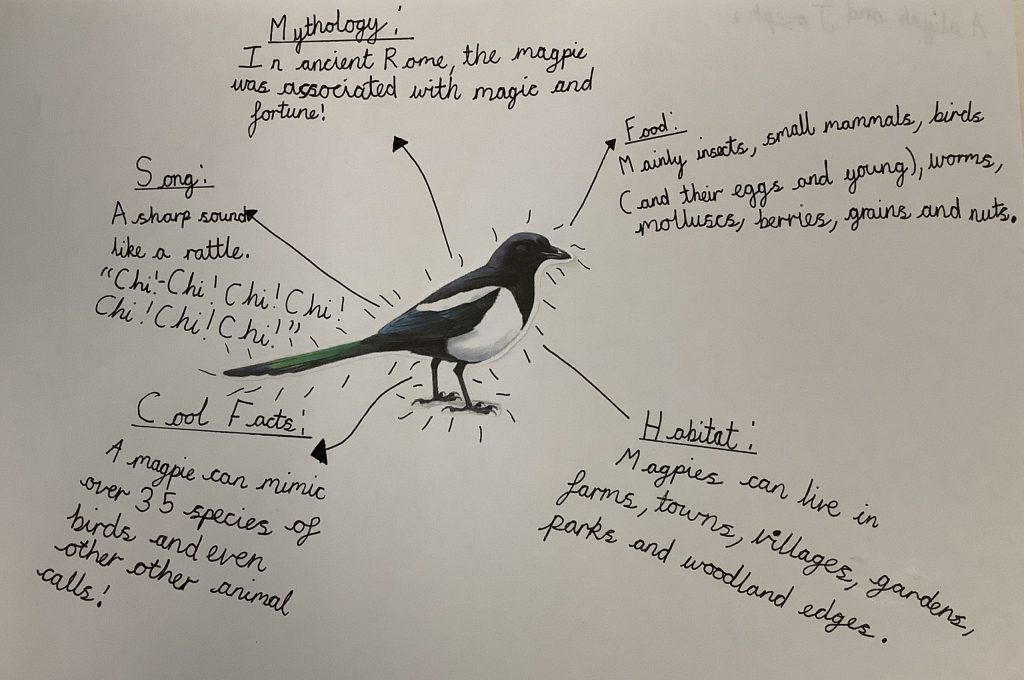
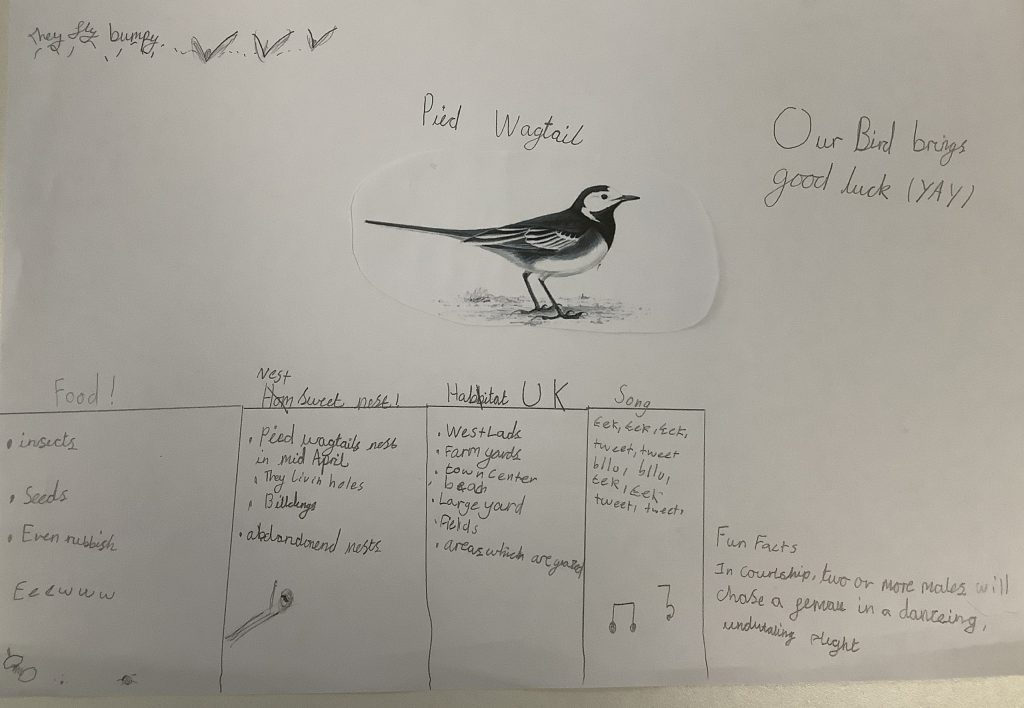
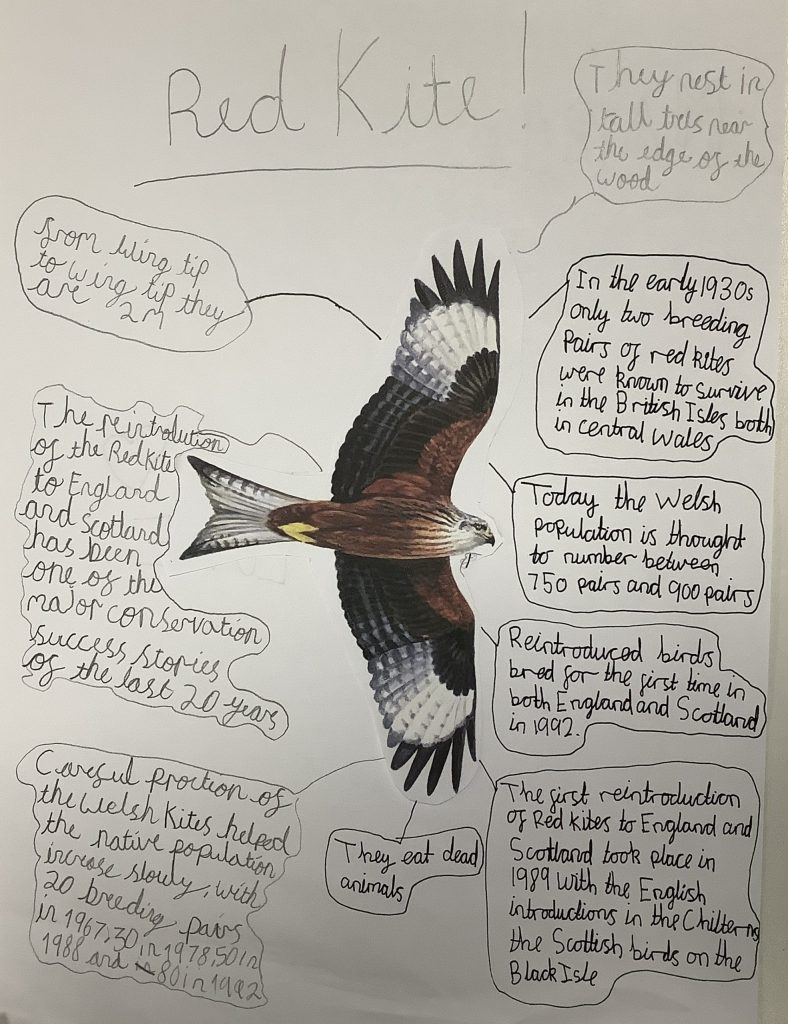
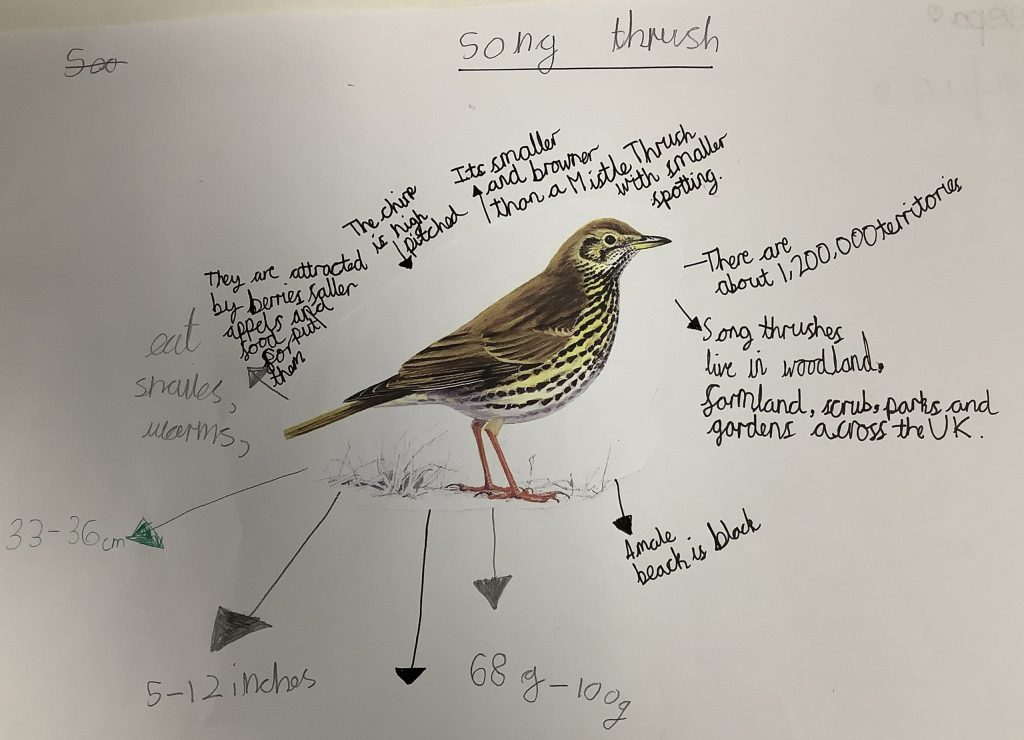
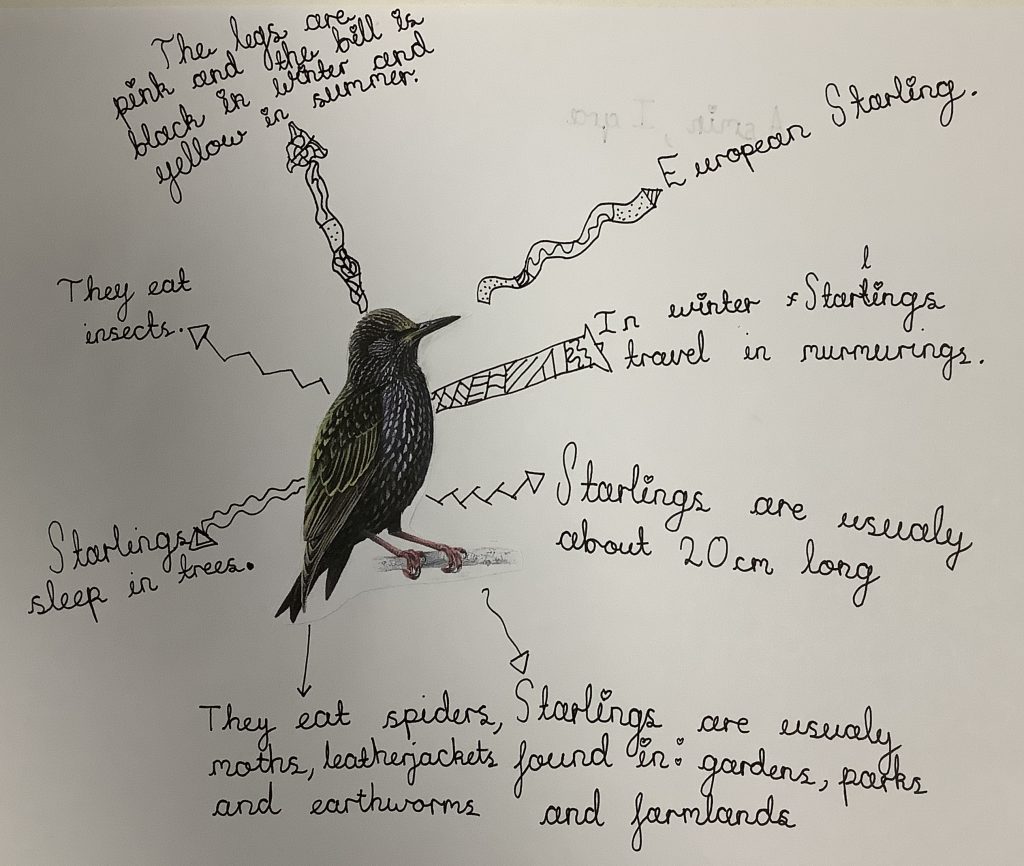
This week 4C asked the question “Do trees travel?“
To try and answer this question we looked at sycamore trees which were apparently introduced into this country by the Romans and now grow all the way across the UK. So perhaps our question was already answered?
The seeds on a sycamore tree are called samaras and we examined them carefully, taking photos and drawing them so that we could identify all their features. Here are some of our drawings and photos:
We also made a paper “helicopter” so that we could compare how well our samaras flew compared with our paper ones:

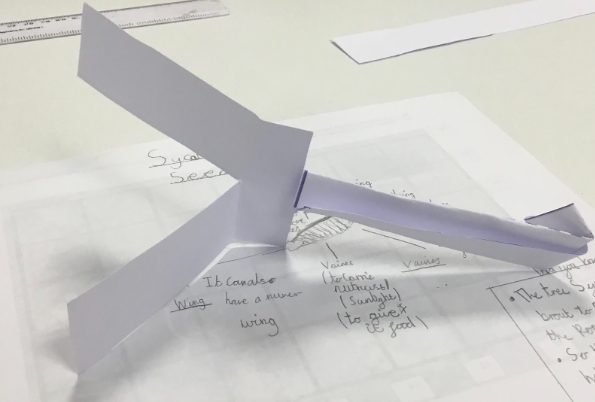
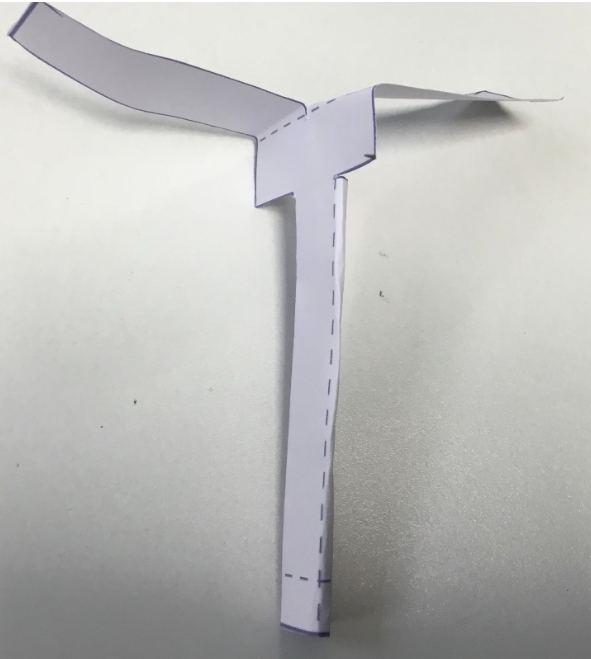
We then took our Samaras and helicopters outside and tried to film them as they fell, whirling through the air.
Our conclusion?
Trees do travel, but very slowly. A sycamore tree can produce huge numbers of seeds which can travel on the wind a reasonable distance from the parent tree but it then takes many years for that see to grow into a tree which can produce more seeds to travel the next section of their journey. In this way, trees have moved north and south with the Ice Ages have changed the climate over thousands of years. Climate change caused by humans may be too rapid for a lot of trees so we may need to give them a helping hand …. just like the Romans did with the sycamores!
For the past few weeks 4C have been exploring trees on a Wednesday afternoon. We have had a look at some of the different trees around the school grounds, collected some leaves and tried to identify some of them using the Woodland Trust app. At this time of year we can identify trees using their leaves or their fruit or seeds.
Trees are incredibly important in our environment and we need to protect the ones we have and grow as many more as we can. If you want to know more about working with trees and what is happening in Leeds about tree planting then there is an event on Friday 10 November.
Alwoodley2030 also have lots of events being planned, some of which involve caring for or planting trees.
Today, 4C researched bees. They are amazing!
We started with an AR (Augmented Reality) bee flying in our classroom

And here is a real bee feasting on a dead nettle:
The class then spent some time researching bees and they discovered some amazing things like:
Here is some of their reports:
Today, 4C have been investigating wind pollination, in particular how wind helps silver birch trees to produce new seed and new plants. We went out into the school grounds and had a closer look at some of the silver birch trees and took a small number of cuttings of their catkins and leaves. These we took back indoors to inspect more closely, to photograph and to draw. We also found some insects amongst the cuttings!
What do you think of the photos? (Click on the photos to see larger picture and start a slide show)

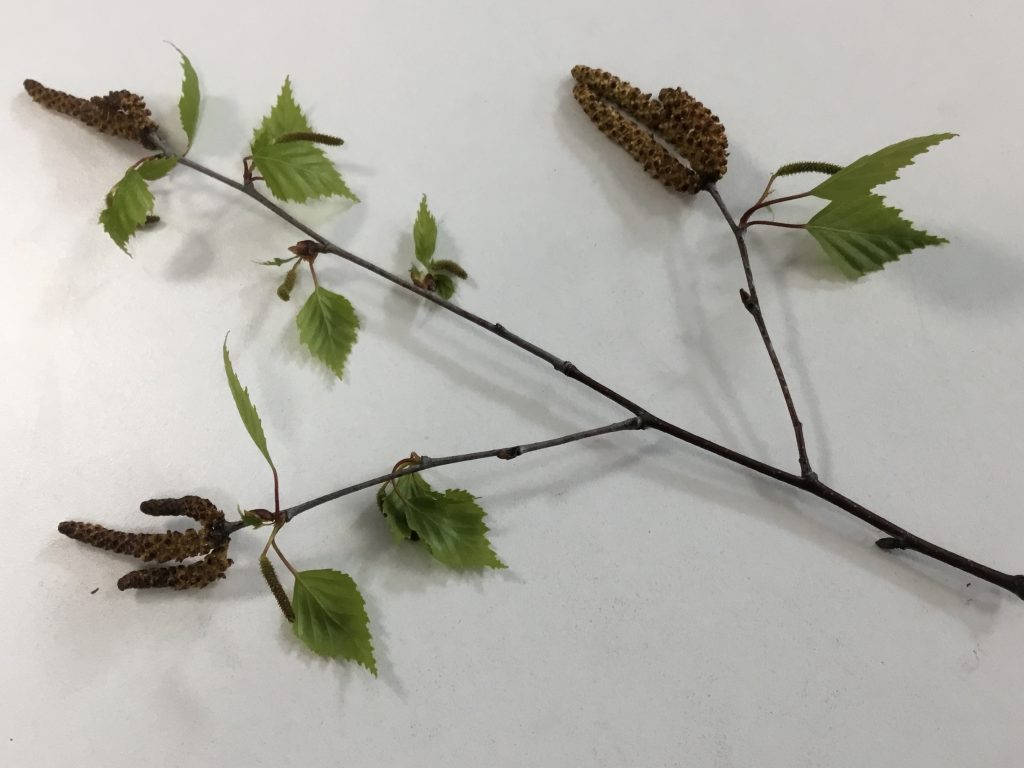
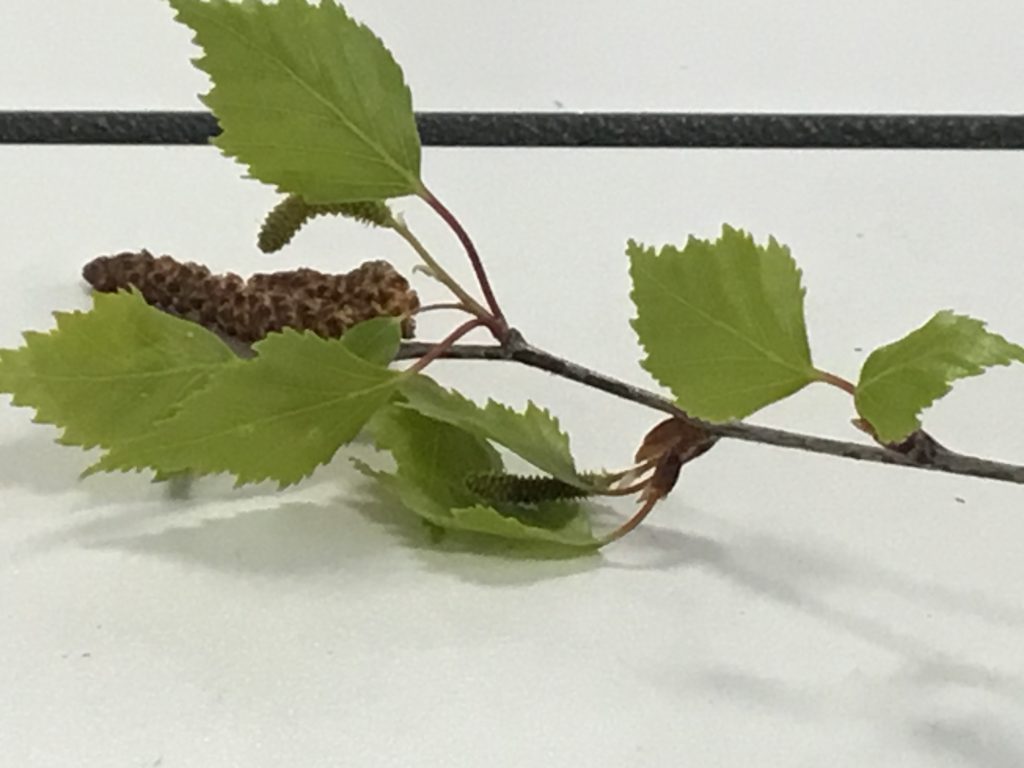


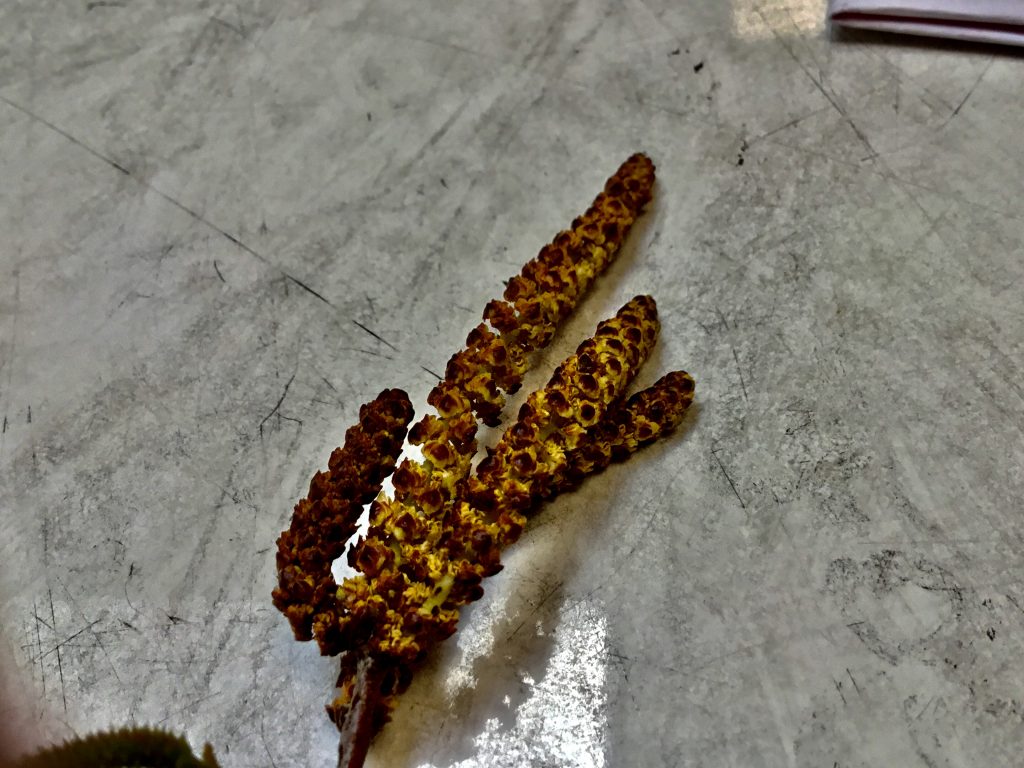


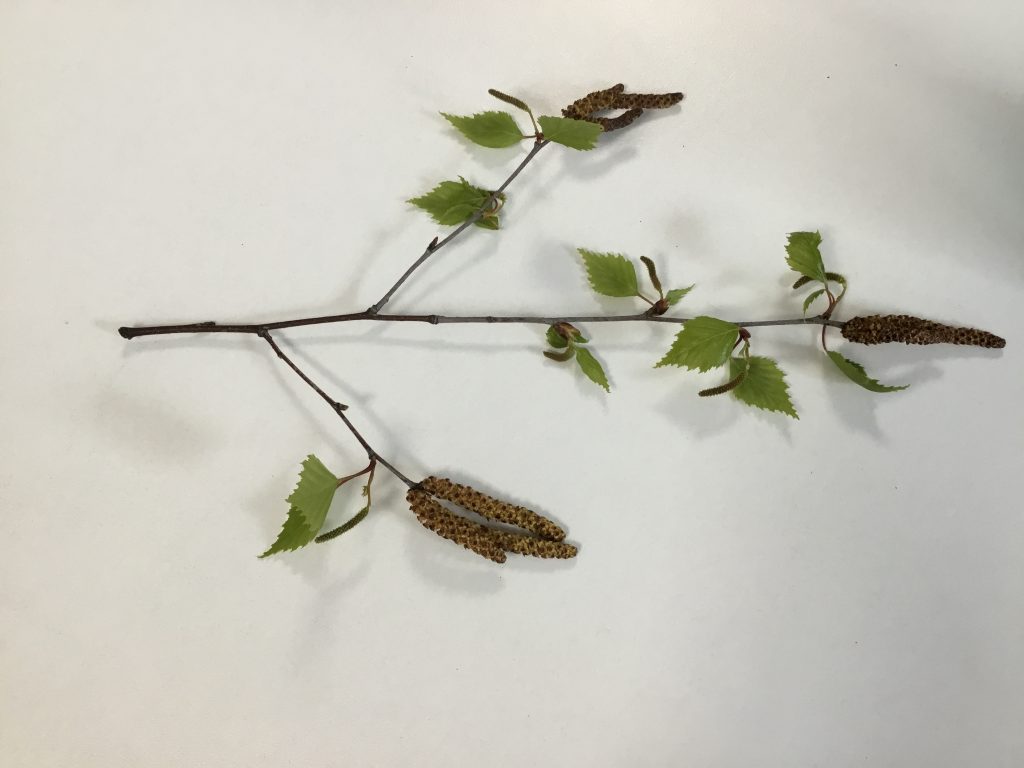
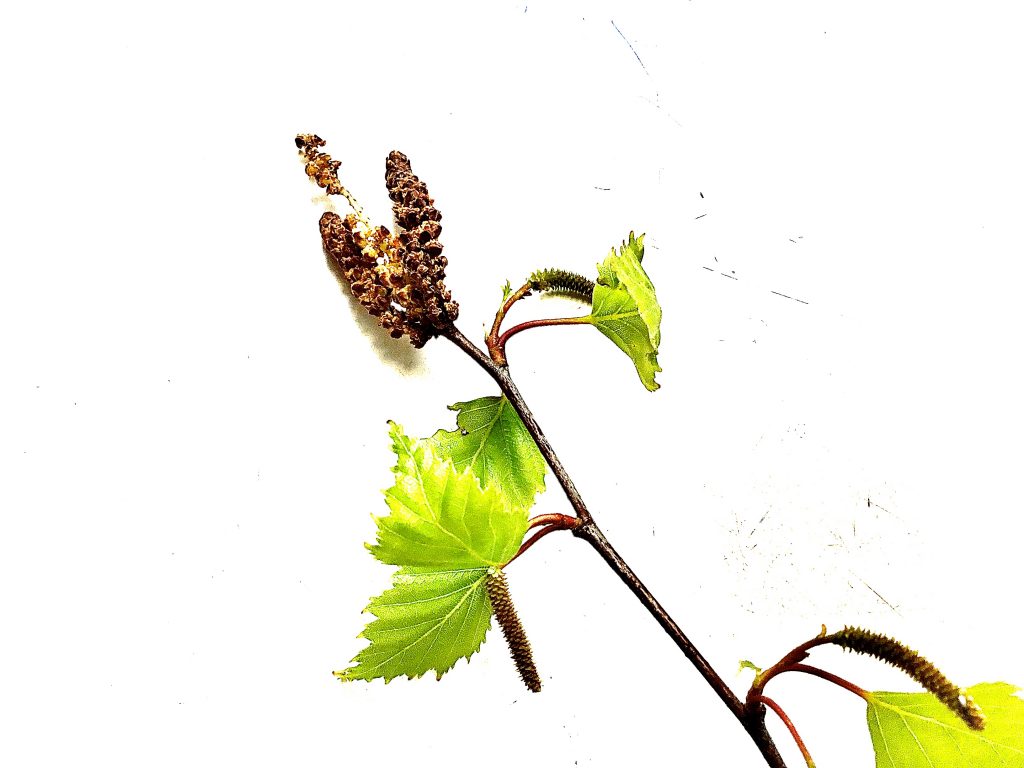

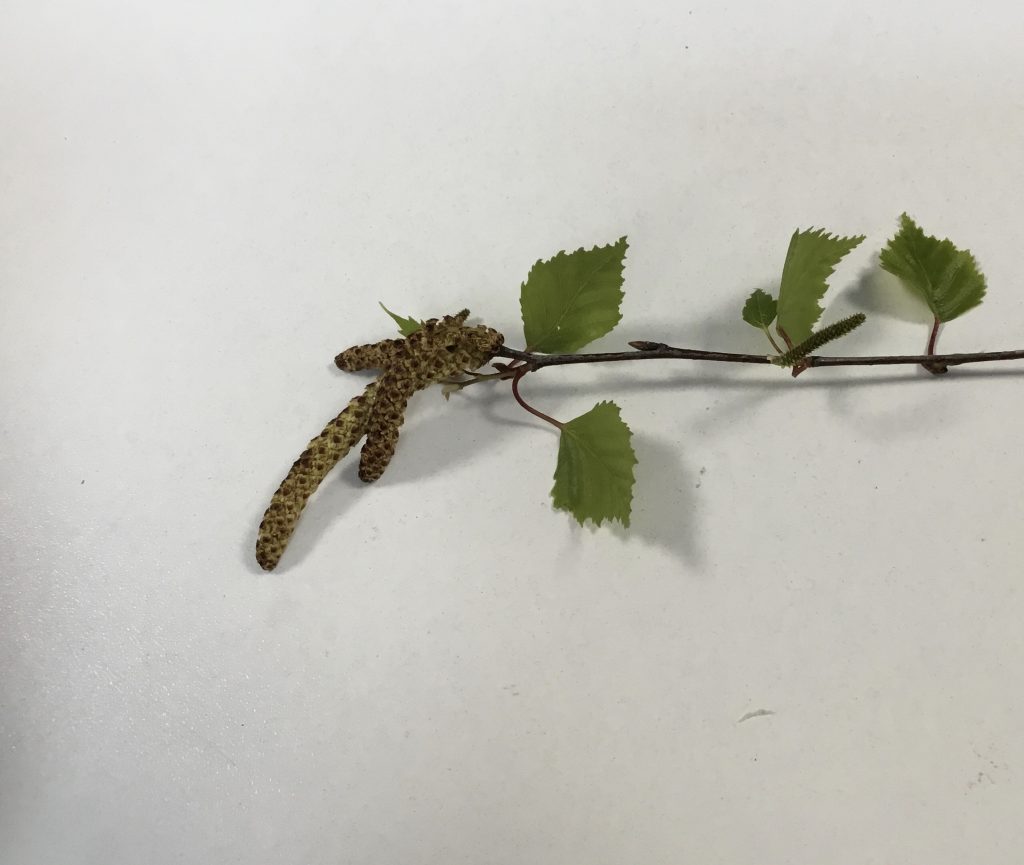

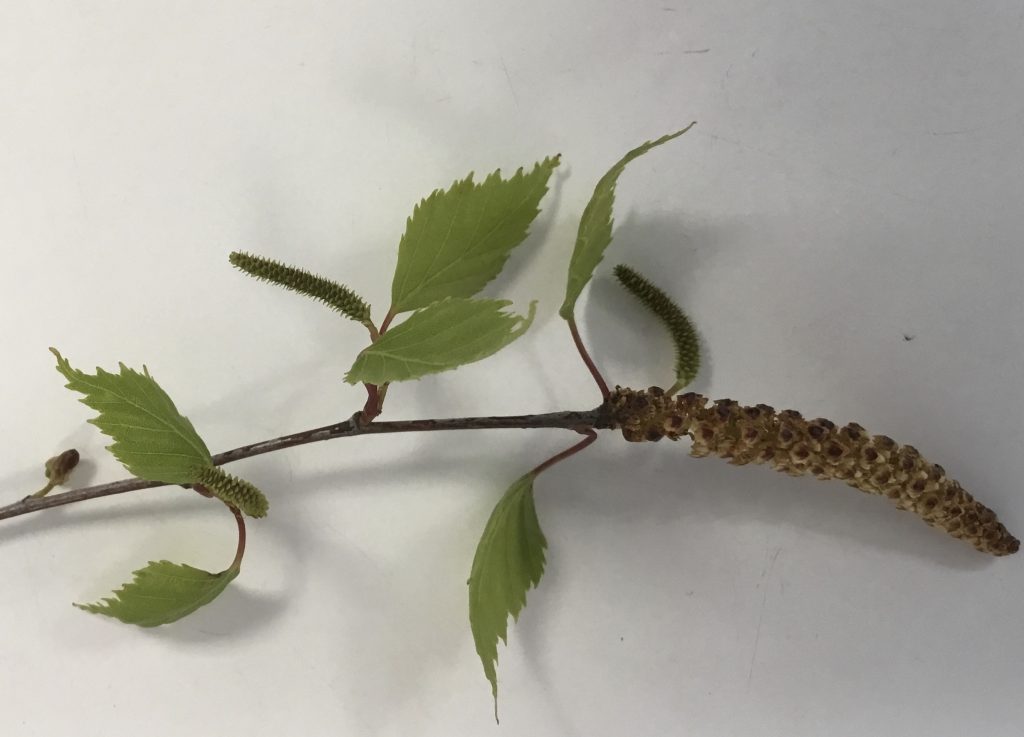
This week 4C explored the question “How do trees travel?” They did this first by looking at the sycamore tree and especially at its specialist seeds called Samaras.
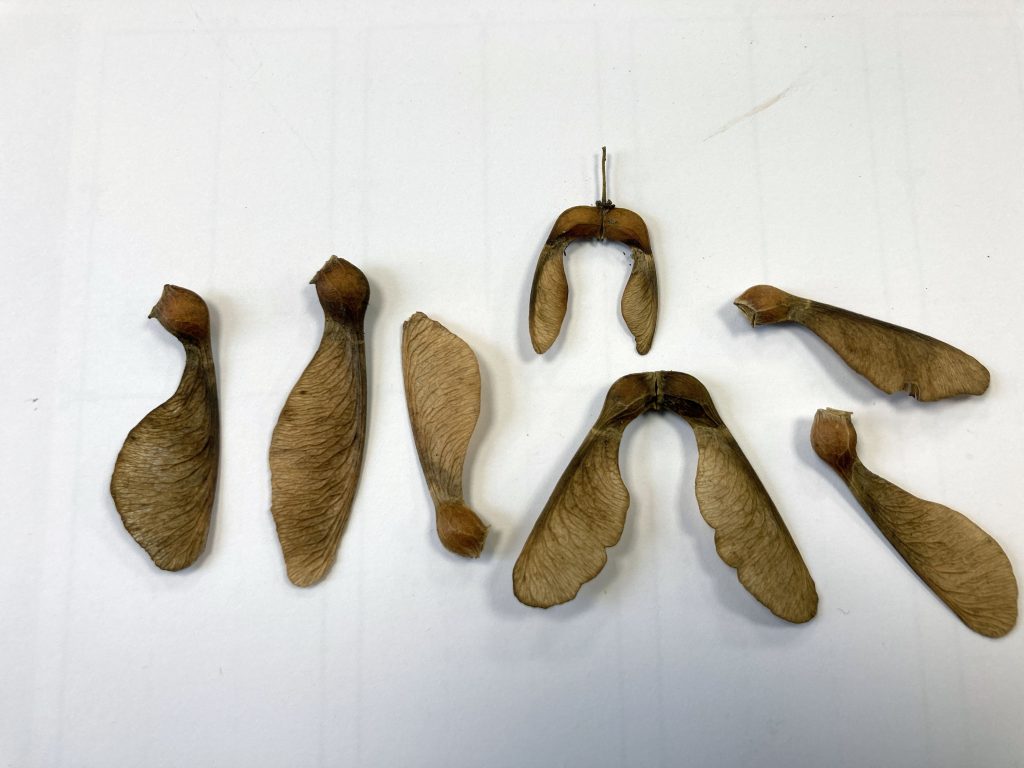
After carefully studying some Samaras we drew some pictures to try and capture the essential parts of the seeds and their wings.
We next made our own helicopter seeds out of paper. We tested these indoors and compared their flight with the flight of Samaras.


We then took both of them outside to investigate the effect of the wind on their flight.
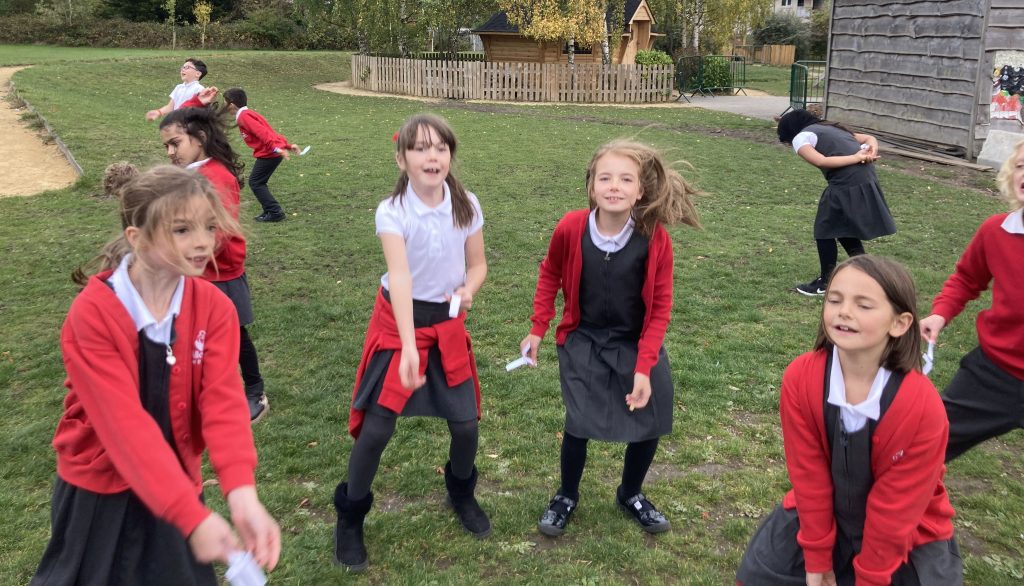
We discovered that both the seed and the paper helicopter were caught by the wind and traveled a considerable distance, many times further than our height. Our conclusion to our original question was that trees do travel, some of them by means of the wind. However, the rate of travel would be very slow because, even though a seed might be carried quite a distance by the wind, a seed would take many years to grow into a mature tree and produce more seeds which could then take their next step on their travels.
Today 4C made apple juice from Spartan apples grown in the school orchard.
Our first task was to pick the apples and although it had been raining heavily earlier we didn’t get too wet. We next washed the apples and checked to make sure we hadn’t got any rotten ones. The cleaned apples were put into a scratter. This is a device that breaks the apples up into a pulp so that it is easier to extract the juice. The pulp was collected in the blue container under the scratter.




The pulp was then fed into an apple press, Once the press was full we put the top on and wound the handle round crushing the apple pulp so that juice poured into the collecting bucket.
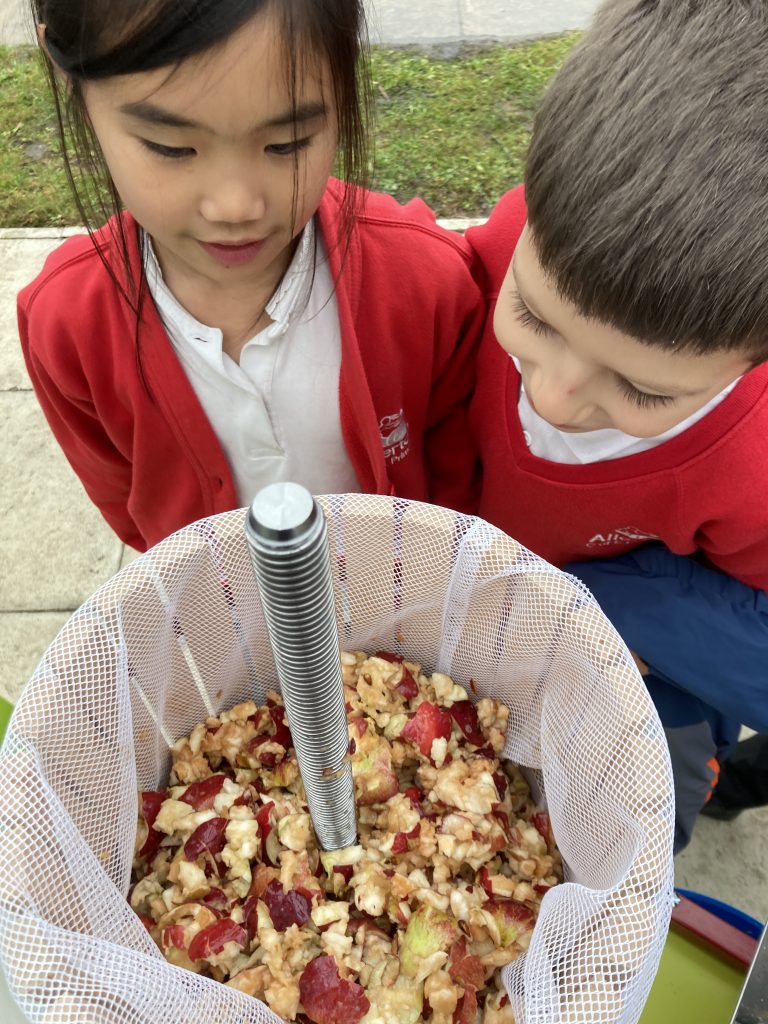
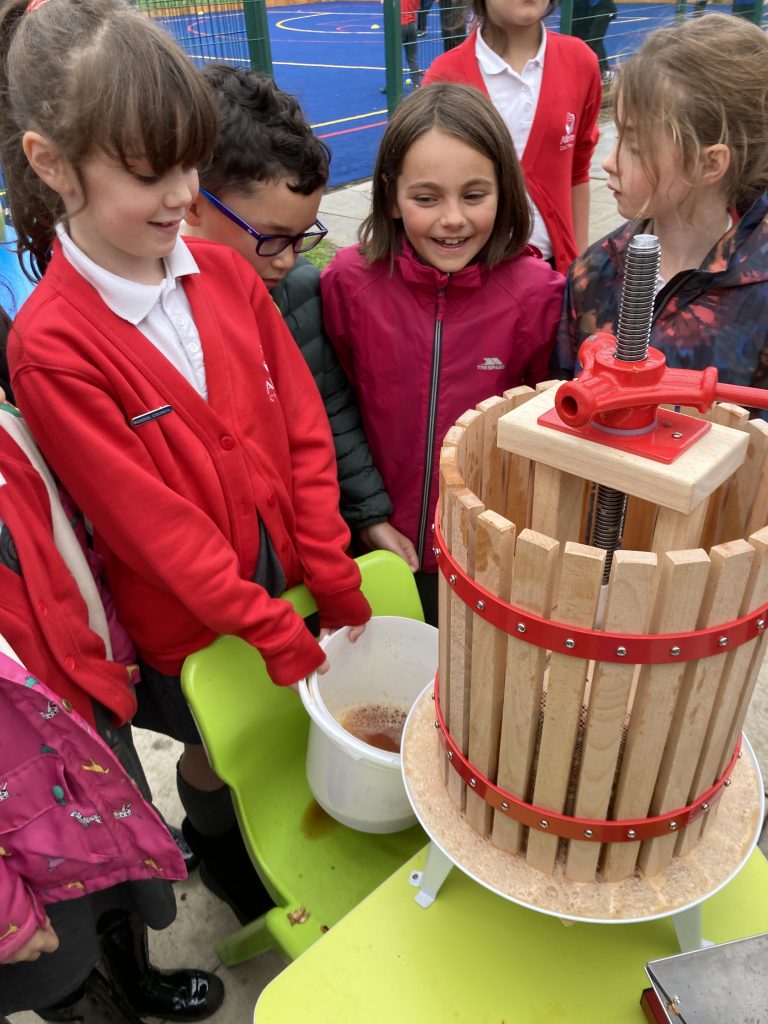
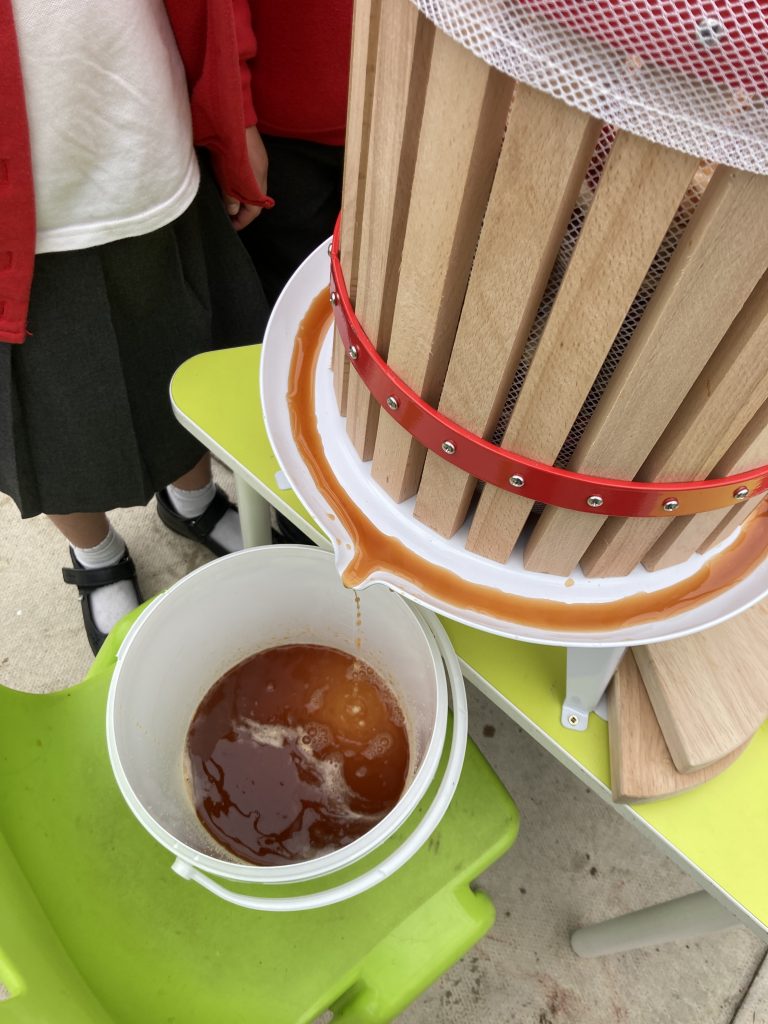
After all the hard work it was time to enjoy the fruits of our labour – or rather, the fruit juice of our labour.
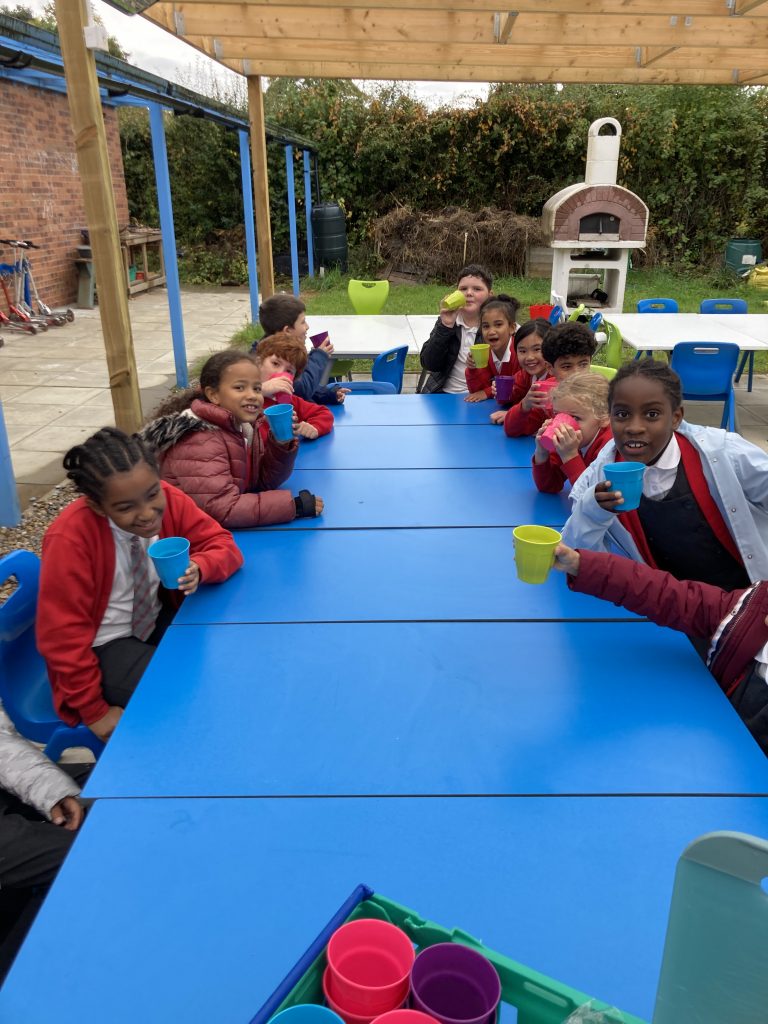
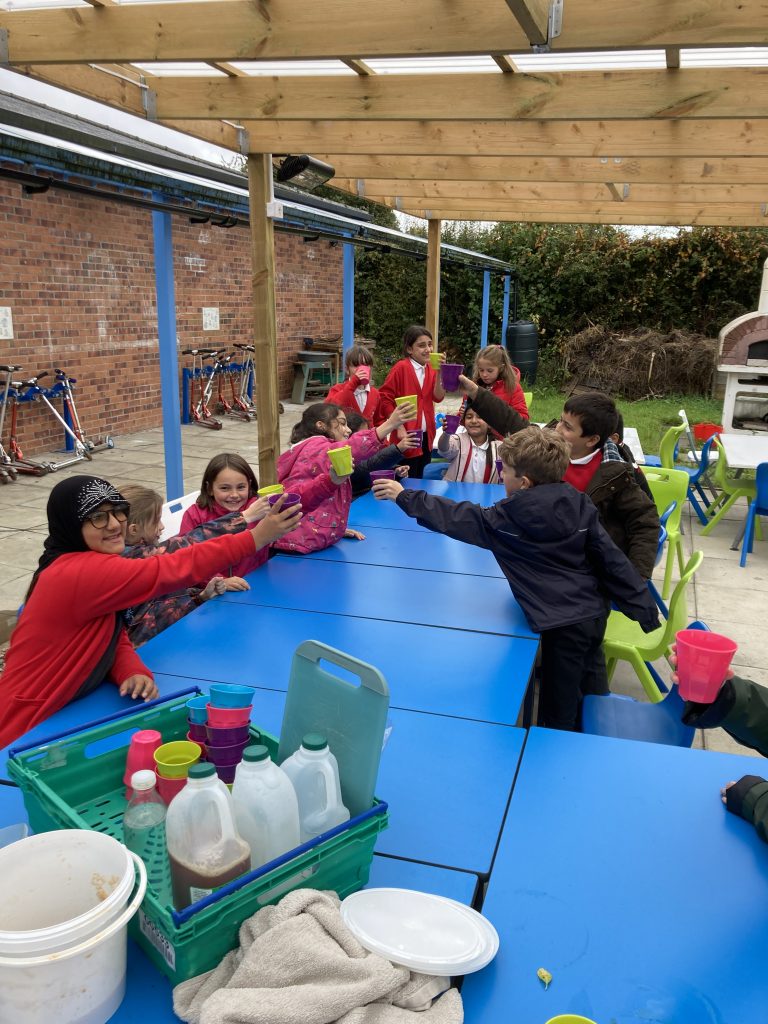
The remaining pulp, now almost dry with all the juice extracted, was added to the compost heap to make new soil which we can use around the school grounds to grow more exciting plants.
If you want to know more about our orchard and the fruit we are growing visit our orchard pages.
Some Native Americans / First Nation peoples from the Great Lakes area of North America have made willow hoops with a web woven into them to act as a “dream catcher”, a protective charm that was hung over sleeping children.
Today, we tested our resilience, our ability not to give up and our knotting skills as we made our own versions of dream catchers. Our webs should catch bad dreams and a hole in the middle should let only good dreams through!
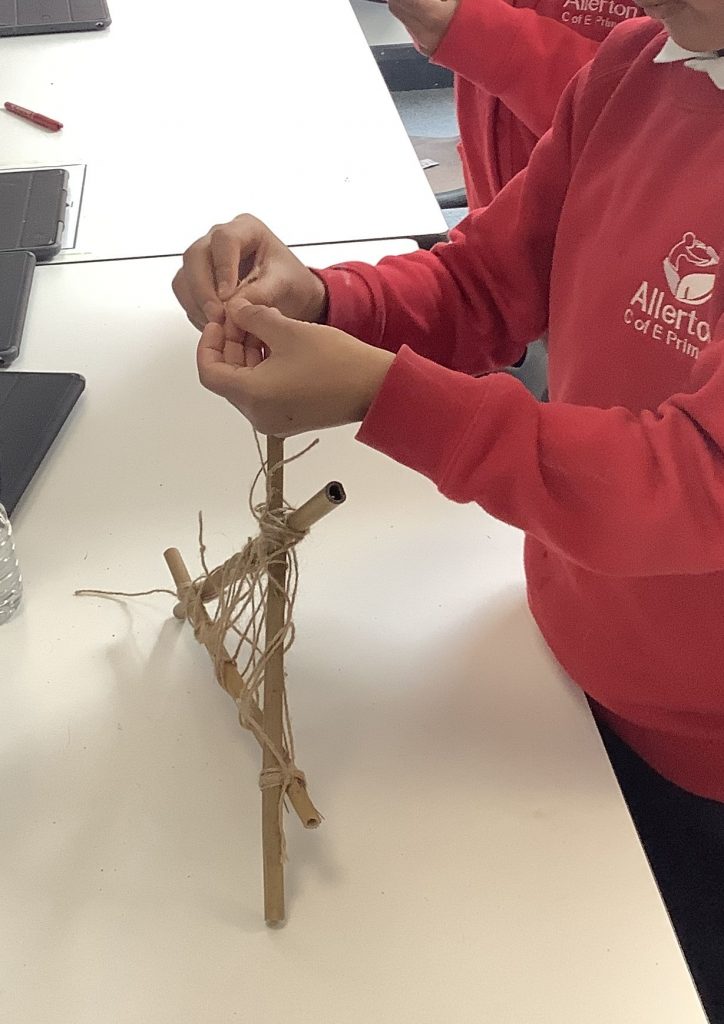
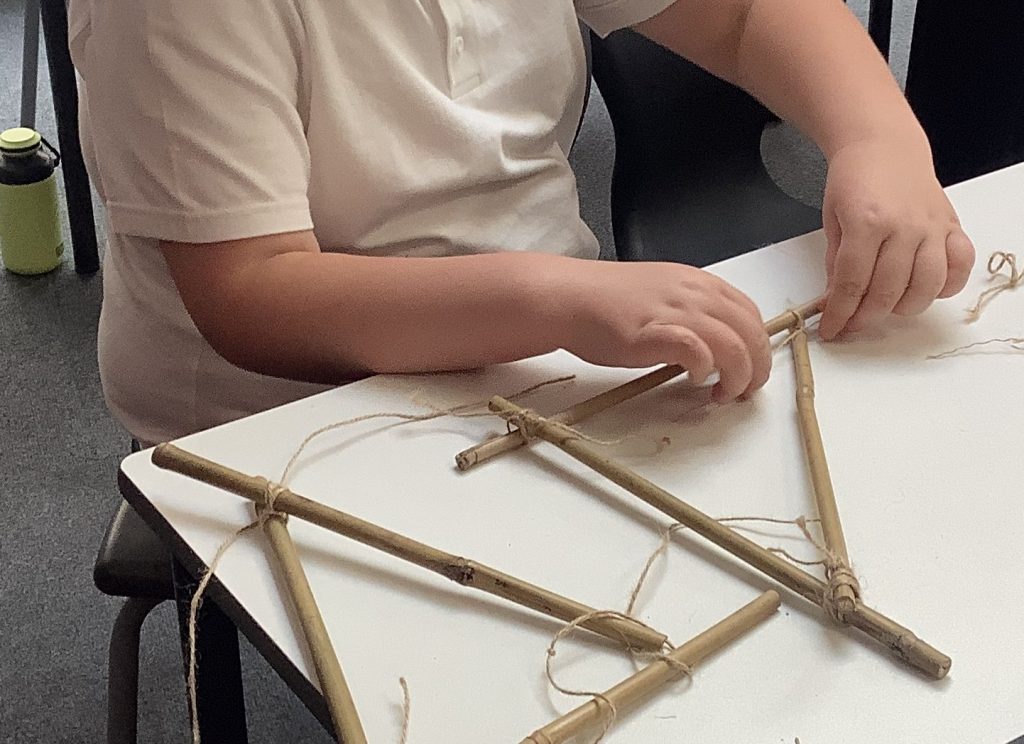
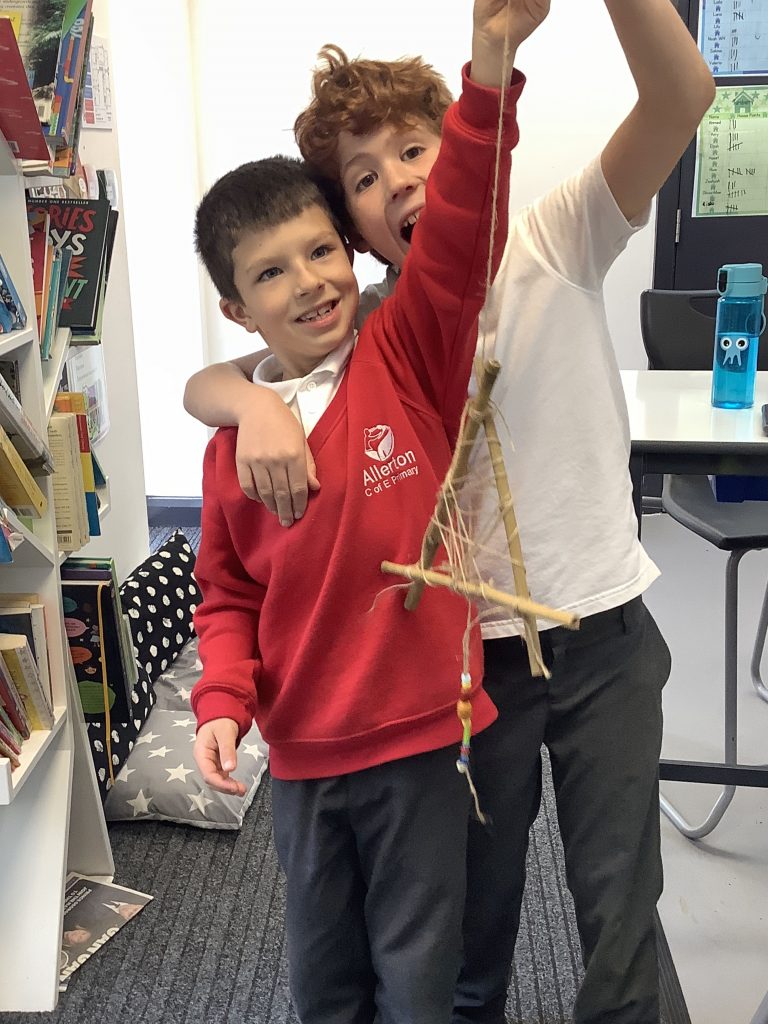
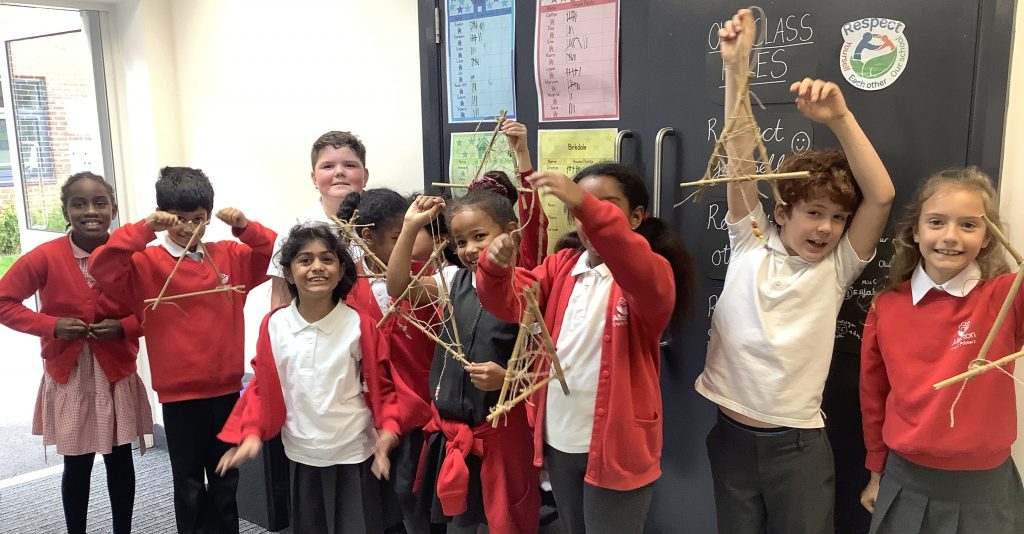
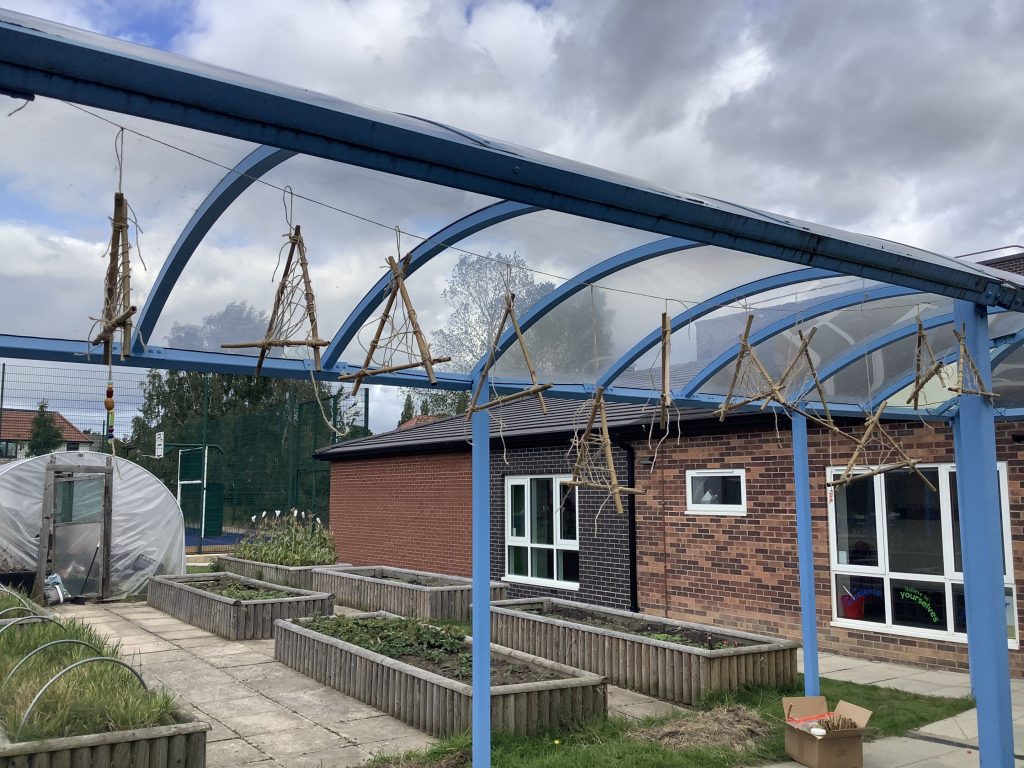
Welcome to class 4C at Allerton CE Primary School in Leeds. Here, under the careful guidance of Miss Cuthill, we will blog to the Big Wide World.
If you use our blog please make sure that you read the Blog Rules and that all your posts are respectful.
Happy Blogging!
